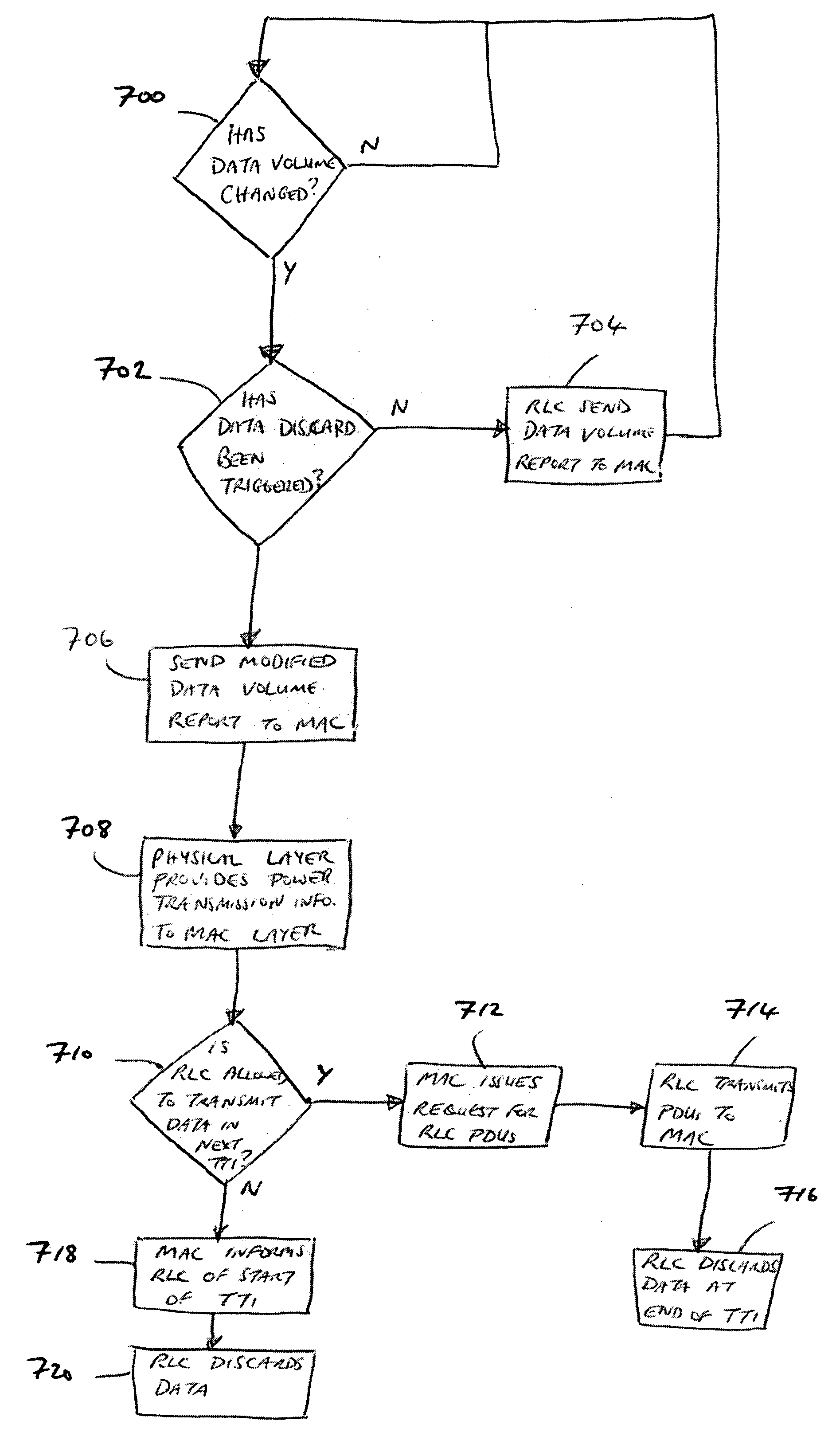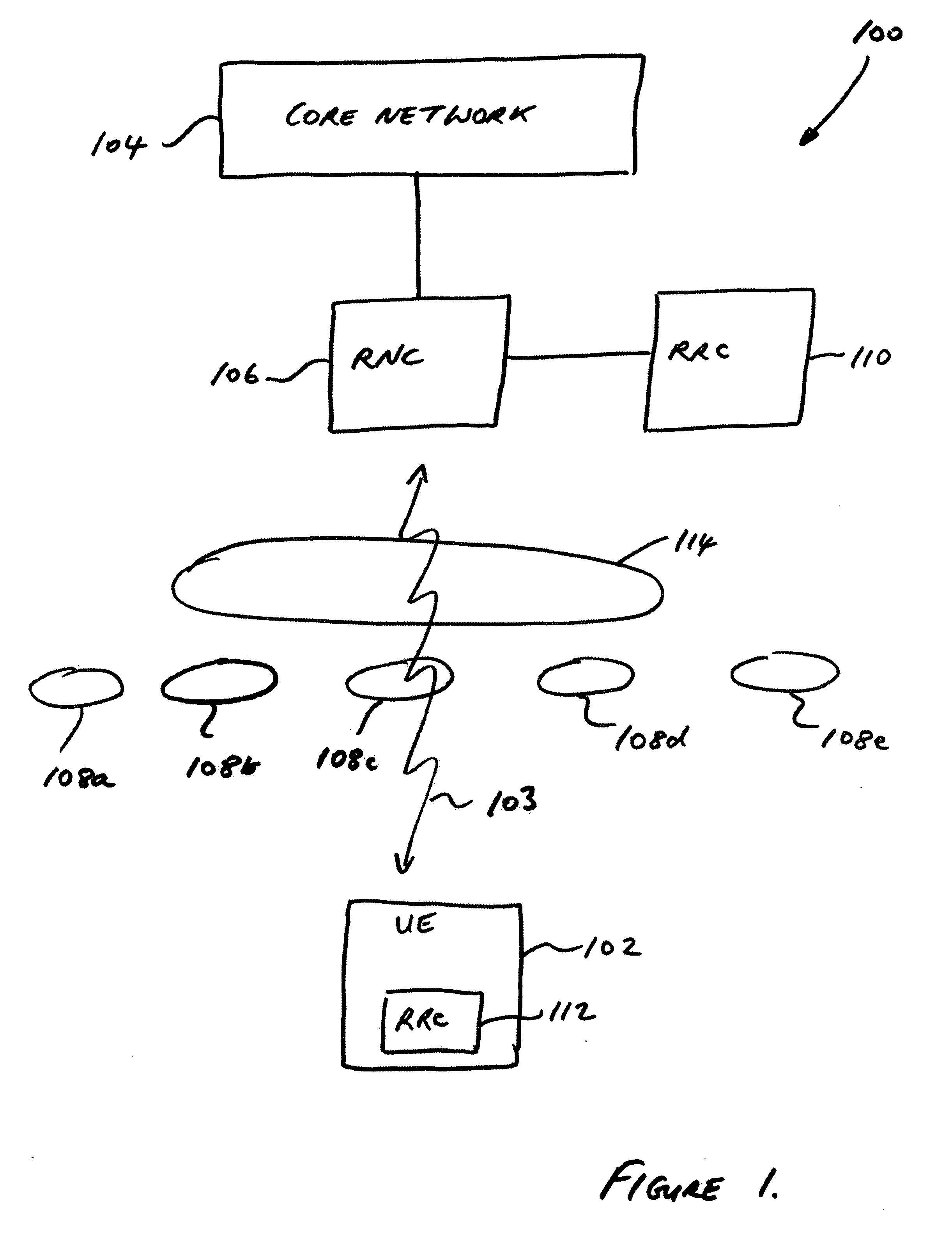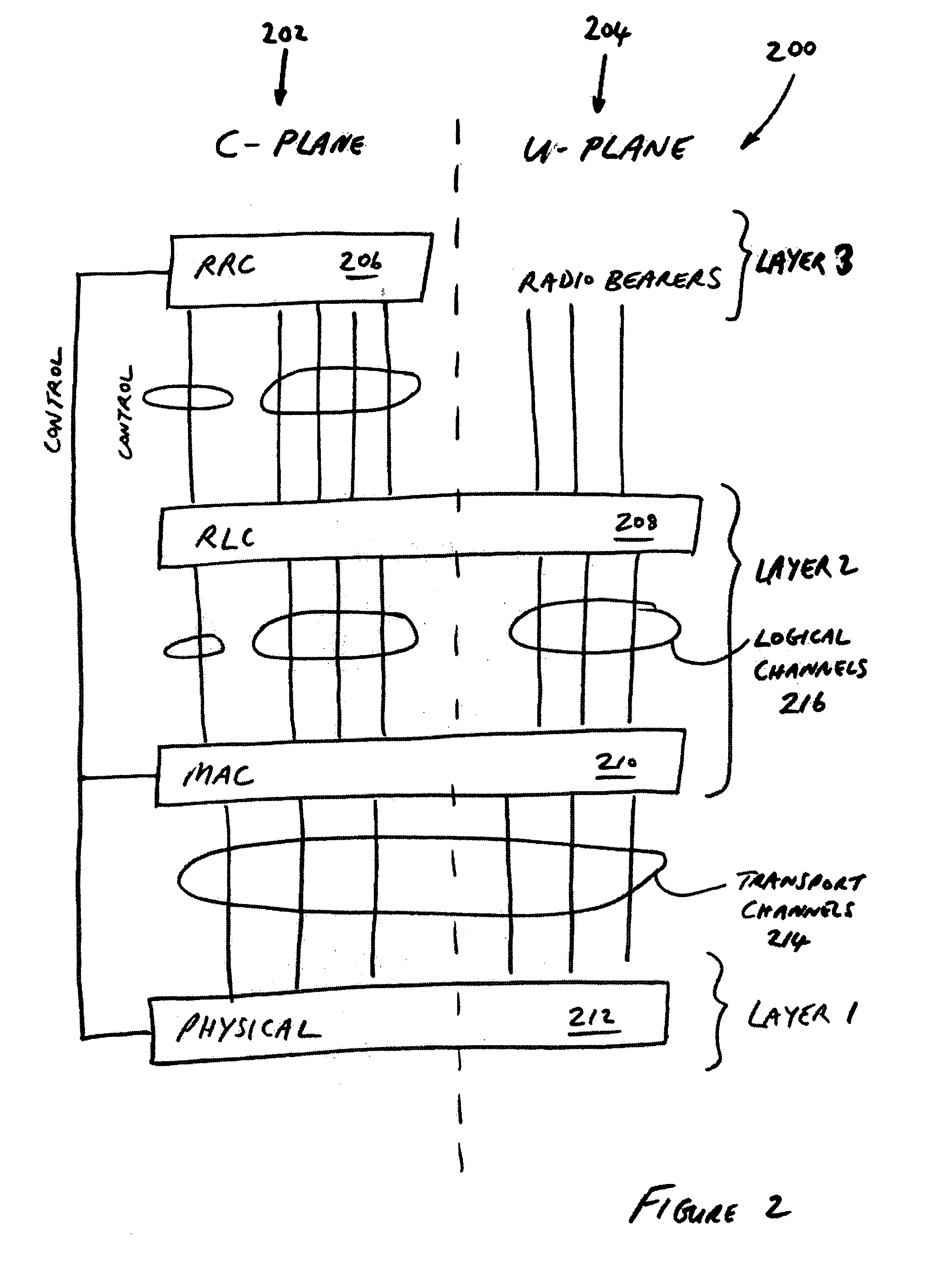Method for processing traffic data in a wireless communications system
a wireless communications system and traffic data technology, applied in data switching networks, frequency-division multiplexes, instruments, etc., can solve the problem that the rlc layer is not made aware, and achieve the effect of reducing the likelihood and reducing the time delay
- Summary
- Abstract
- Description
- Claims
- Application Information
AI Technical Summary
Benefits of technology
Problems solved by technology
Method used
Image
Examples
Embodiment Construction
[0033] The foregoing and further features of the present invention will be more readily understood from a description of a preferred embodiment, by way of example thereof, with reference to the accompanying figures.
[0034] The so-called third generation mobile communications system is presently evolving. This is a next generation global mobile communications system that is generally based on the core network technology of the existing Global System for Mobile Communications (GSM). Various telecommunications standards bodies and telecommunications equipment vendors from around the world have agreed to collaborate on what is known as the Third Generation Partnership Project (3GPP). The 3GPP encompasses a number of research fields including the Universal Mobile Telecommunications System (UMTS) Terrestrial Radio Access Network (UTRAN). UMTS is the European form of the third generation mobile communications system.
[0035] The following description of the UTRAN with reference to FIGS. 1 t...
PUM
 Login to View More
Login to View More Abstract
Description
Claims
Application Information
 Login to View More
Login to View More - R&D
- Intellectual Property
- Life Sciences
- Materials
- Tech Scout
- Unparalleled Data Quality
- Higher Quality Content
- 60% Fewer Hallucinations
Browse by: Latest US Patents, China's latest patents, Technical Efficacy Thesaurus, Application Domain, Technology Topic, Popular Technical Reports.
© 2025 PatSnap. All rights reserved.Legal|Privacy policy|Modern Slavery Act Transparency Statement|Sitemap|About US| Contact US: help@patsnap.com



